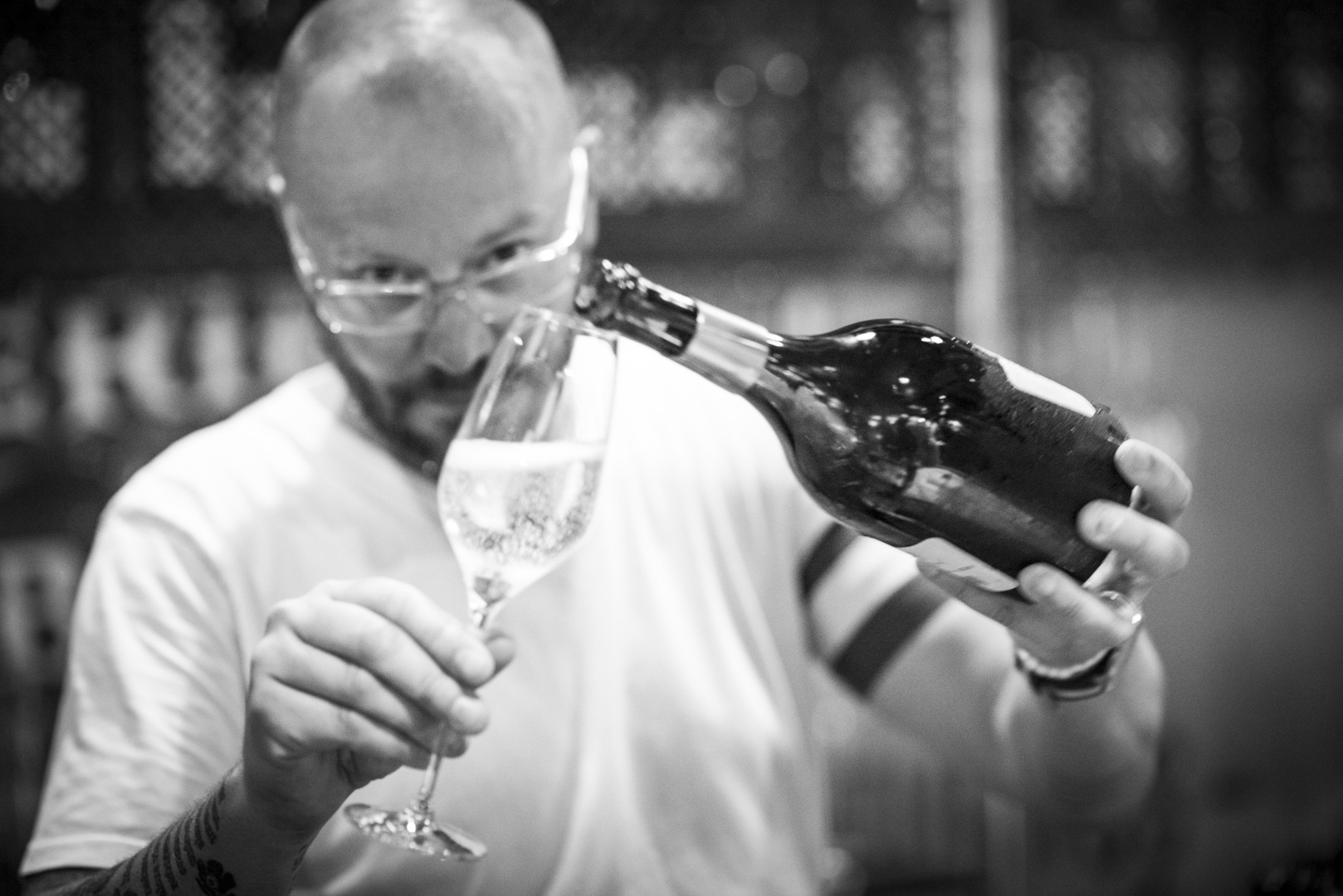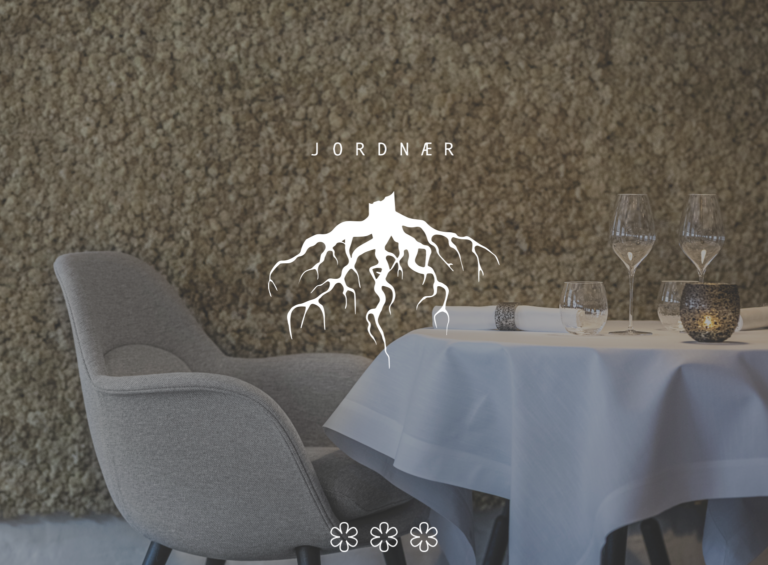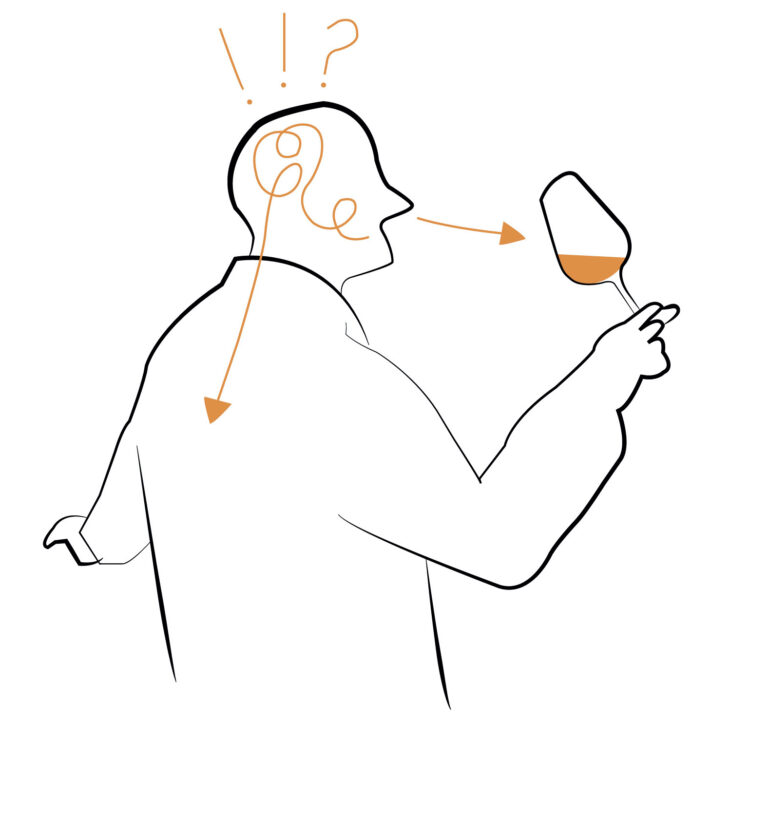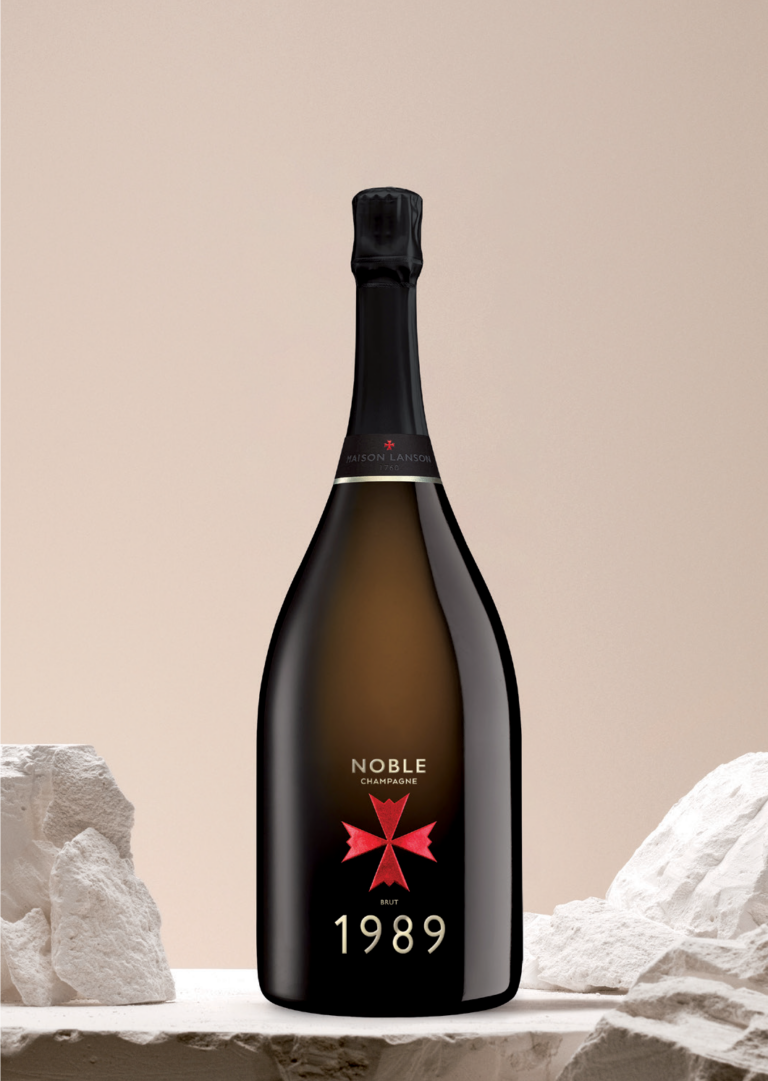Champagne is synonymous with celebration and sophistication. Learn How to Serve Champagne: Expert Tips for the Perfect Toast [read the full champagne story]
Estimated reading time: 10 minutes

When serving Champagne, you aim to preserve the quality and character that makes this sparkling wine revered around the world. The effervescence, aroma, and flavor of Champagne are delicate elements that can be affected by the way it’s served. It’s about more than just popping the cork; it’s about creating an experience that honors the tradition and craftsmanship behind this festive beverage.
To ensure that you capture the essence of Champagne, there are certain steps you should follow. These steps begin with the correct storage of the bottle, selecting the appropriate glassware, and end with the pouring technique. Proper service temperature is critical; too warm and the Champagne can lose its signature bubbles too quickly, too cold and the subtle flavors and aromas may be subdued.
Additionally, how you handle the bottle can influence the effervescence and, consequently, the sensory experience. Each aspect of service, from the angle at which you pour to the moment the liquid touches the glass, plays an instrumental role in the amplification of its complex characteristics. Serving Champagne rightly is vital to any special occasion, transforming it into a memorable moment.
Choosing the Right Champagne
Selecting the ideal Champagne involves understanding its types and how they complement different occasions. This choice affects the character of your event and the satisfaction of your taste buds.
Understanding Champagne Types
Champagne, a sparkling wine exclusive to its namesake region in France, varies in style and flavor profile. The primary types include:
- Brut: A dry Champagne with high acidity, Brut is the most common style, offering a crisp and refreshing taste.
- Demi-Sec: Sweeter than brut, Demi-Sec is ideal for those who prefer a less sharp flavor.
- Blanc de Blancs: Made exclusively from Chardonnay grapes, this type provides a light, lemony taste perfect as an aperitif.
- Blanc de Noirs: Produced from black grape varieties, these Champagnes exhibit an intensity suited for robust flavours.
- Rosé: With its pink hue and subtle red fruit flavors, Rosé Champagne adds a festive aesthetic and taste.
The choice of Champagne directly influences the flavour and experience. Brut is versatile for most celebrations, Blanc de Blancs serves well as an elegant aperitif, and for a unique twist, Champagne cocktails can elevate the beverage’s complexity.
Matching Champagne With the Occasion
Your choice should align with the event’s atmosphere:
| Occasion | Suggested Champagne Type | Reasoning |
|---|---|---|
| Formal Celebration | Krug Grande Cuvée or Vintage Champagne | Adds a prestigious touch |
| Casual Brunch | Demi-Sec or Prosecco | Light and pleasing, complementary with varied brunch dishes |
| Lively Festive Party | Rosé or Cava | Fun and adaptable for toast and mingling |
For celebrations, stick to authentic French Champagne for an authentic and luxurious experience. If you seek an alternative to Champagne or a less formal option, Prosecco or Cava, both sparkling wines, may suit your preference while still providing the effervescence and spirit of celebration. Remember, the ideal selection is one that enhances your occasion and pleases both your own and your guests’ flavor expectations.
Proper Champagne Storage
Proper storage is crucial to maintain the quality and exquisite flavor of your Champagne before serving. It ensures the preservation of the delicate bubbles that are signature to its experience.
Pre-Serving Temperature Control
When storing Champagne, temperature is king. Champagne must be kept cool, but not too cold, as extreme temperatures can negatively affect the wine’s flavor and bubble retention. Ideally, store your Champagne at a steady temperature between 45°F and 55°F (7°C to 13°C).
- Avoid fluctuations: Frequent changes in temperature can spoil the Champagne, causing the pressure inside the bottle to vary and potentially harm the wine’s structure and bubbles. Keep your Champagne in a stable environment.
- Chilling before serving: Gradually lower the temperature of your Champagne to the serving temperature of about 47°F to 50°F (8°C to 10°C). Chilling can be done in a refrigerator for several hours or in a bucket of half ice and half water for about 30 minutes. Avoid putting Champagne in the freezer as it can chill too rapidly, altering the pressure and damaging the bubbles.
Keep Champagne away from light, especially direct sunlight, as UV rays can degrade and prematurely age the wine, affecting its flavor. For long-term storage, horizontal positioning is recommended to keep the cork moist, which prevents it from drying out and letting air into the bottle, which could spoil the Champagne.
Remember, your Champagne’s bubbles and flavor are your treasures; store it with care to enjoy the vibrant effervescence and rich taste that a properly preserved Champagne offers.
Preparing to Serve
When serving Champagne, the choice of glassware and the opening technique are crucial for preserving its character and effervescence. Selecting the appropriate glassware enhances the enjoyment, while the correct opening procedure safeguards against spills and ensures the Champagne’s optimal expression.
Selecting the Right Glassware
To experience the full spectrum of aroma and bubbles in your Champagne, choosing the right glassware is key. Typically, a Champagne flute or a white wine glass is recommended:
- Champagne flute: A long, thin vessel that enhances the stream of bubbles and prevents the quick dispersion of foam and aroma.
- White wine glass: Wider than a flute, it allows more intense contact with the Champagne, enhancing the aroma while still preserving the vibrant bubbles.
Despite their historical charm, coupes are less ideal as they cause the bubbles to dissipate more rapidly, leading to a faster loss of both foam and aroma.
The Opening Procedure
How to open a Champagne bottle is as important as the pour. To prevent the iconic cork popping from overshadowing the experience with unwanted foam overflow, follow these steps:
- Chill the Champagne: Ensure your bottle is properly chilled to around 7–9°C to reduce the pressure inside the bottle.
- Remove the foil: Carefully unwrap the foil from around the top of the bottle.
- Unloosen the cage: Twist the wire cage counterclockwise, typically 6 half-turns, but do not remove it completely yet.
- Cover with a towel: This provides grip and catches any unexpected overflow.
- Hold the cork and twist the bottle: Grasping the cork firmly with one hand, use the other to slowly twist the bottle at its base. Control is key to preventing the foam from escaping violently.
- Ease the cork out gently: Listen for the soft swoosh of gas escaping as the cork comes free, indicating a successful opening.
With a touch of finesse, you can open your Champagne with minimal loss of precious effervescence, ready to serve and enjoy.
The Art of Pouring Champagne
Pouring champagne is crucial for maintaining its signature effervescence and taste. Proper technique ensures maximum enjoyment with each glass.
Mastering the Pour to Preserve Bubbles
When you pour champagne, begin by holding the base of the flute at a slight angle. Gradually straighten the flute as you fill it to prevent excess foam and preserve the bubbles. These bubbles are essential to the sensory experience of champagne, carrying the aroma and flavor.
Steps to Master the Pour:
- Chill the champagne to about 45°F to reduce foam.
- Hold the flute angled about 45 degrees.
- Pour slowly along the side—this helps retain carbonation.
The preservation of carbonation is paramount because it influences the texture and helps release the aroma of the champagne.
Serving Size and Foam Control
To ensure a proper serving, fill the flute about two-thirds full. This practice allows the bouquet to develop and minimizes the risk of overflowing foam.
Guidelines for Foam Control:
- Gentle pouring: Minimizes the risk of excessive foam.
- Pause if needed: Allow foam to settle before topping off.
- Avoid overfilling: Leaves room for aromas to blossom and for bubbles to form without spilling.
By controlling the foam, you ensure the champagne does not go flat too quickly, safeguarding both flavor and effervescence.
Pairing Champagne With Food
When selecting the right food to accompany your champagne, consider the champagne’s flavor profile, acidity, and nose to ensure a harmonious pairing.
Selecting Appetizers That Complement Champagne
- Caviar: With its high acidity, champagne cuts through the richness of caviar, enhancing the experience.
- Cheese: Soft cheeses like Brie and Camembert pair well with champagne, as the fizziness contrasts creaminess.
- Oysters: The mineral notes in champagne complement the briny flavor of oysters.
Main Courses and Champagne Pairings
- Poultry: Lightly cooked chicken dishes with lemon or herb seasonings create an appealing contrast with the vibrant acidity in champagne.
- Seafood: Grilled or poached seafood, especially shellfish, elevates champagne’s crispness and complexity.
- Red Meat: While not traditional, select champagnes can pair with red meat; choose a vintage with a fuller body to stand up to the richness.
Champagne and Dessert Combinations
- Demi-Sec Champagne: A demi-sec or slightly sweet champagne works well with fruit-based desserts, complementing without overpowering.
- Dessert Cheese: Pair a brut champagne with dessert cheeses that have a hint of sweetness to balance the dryness of the drink
Understanding Champagne Service Etiquette
Appropriate champagne service requires understanding specific protocols that ensure the celebration retains its elegance. Your role in following these guidelines is key to enhancing the overall experience.
Serving Sequence and Mannerisms
When you serve champagne, it is imperative to follow a sequence that respects the ceremonial nature of bubbly. Start by presenting the bottle for verification, ensuring that it is the correct choice for the occasion.
Order of Service: Aim to pour champagne in a clockwise direction if you are facing the guests, beginning with the guest of honor and proceeding to others. Women are traditionally served first, followed by men, and finally, the host, if you are serving a small group.
Handling the Bottle: Grasp the champagne bottle from the base with one hand and support the neck with the other, preferably with a serviette. This provides control and prevents fingerprints on the bottle.
- Chilling: Serve champagne chilled, between 6-8 degrees Celsius.
- Glassware: Use tall, slender flutes that showcase the beverage’s fine bubbles.
- Pouring Technique: Tilt the glass at a 45-degree angle and pour gently to preserve the champagne’s effervescence. Fill the flute approximately two-thirds to allow the aromas to circulate.
Refilling: Monitor guests’ flutes and offer refills once they’re about one-third full. This keeps the bubbly fresh and the celebration seamless.
Toast Protocol: Pause serving when a toast is proposed. After the toast, continue serving or refilling glasses as needed.
Following these steps with attention to detail enhances the special occasion, allowing the celebratory nature of champagne to be fully appreciated without distraction.
Frequently Asked Questions
These FAQs will guide you through the essentials of serving Champagne, from selection of glassware to pairing with food.
What is the proper glassware for serving Champagne?
You should serve Champagne in a flute or tulip-shaped glass. These designs allow the bubbles to rise to the top, enhancing the sensory experience of the drink.
What temperature should Champagne be served at?
Champagne should be served chilled, between 45°F to 48°F (7°C to 9°C). This temperature highlights its flavors and maintains the integrity of the bubbles.
How do you properly open a bottle of Champagne?
To open a bottle of Champagne, remove the foil and loosen the wire cage. Place a cloth over the top, hold the cork and gently twist the bottle at its base. The cork should ease out with a soft pop.
What is the recommended portion of Champagne for each guest?
For each guest, pour about 4 ounces (120 ml) of Champagne. This is enough for a toast and can be topped up as the event progresses.
How can Champagne be paired with various foods?
Champagne pairs well with light, delicate foods. Try it with seafood, oysters, or a simple fruit dessert to complement its crisp, refreshing nature. Avoid heavy or intensely flavored dishes that might overpower its subtle flavors.
What is the correct etiquette for toasting with Champagne?
When toasting with Champagne, it’s customary to wait until everyone has been served. Raise your glass at eye level, make eye contact with your fellow guests, clink glasses gently if it’s culturally appropriate, and sip after the toast is complete.





